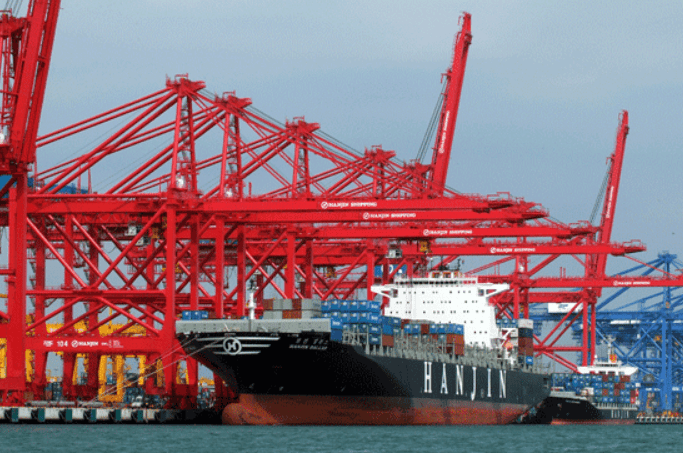South Korea‘s exports recorded a 6.1% year-on-year growth in 2022 to $683.75bn, according to statistics from the Korea Customs and Trade Development Institute (KCTDI).
According to the World Trade Organization (WTO), relatively strong economic fundamentals and room for manoeuvre to cope with external shocks have helped Korea maintain macroeconomic stability and ensure the resilience of its export-led economy.
The sequence of South Korean product exports is as follows: 2018 ($605.169 million), 2019 ($542.333 million), 2020 ($512.789 million) and 2021 ($644.439 million).
Since the South Korean government announced its plans to enter into Free Trade Agreements (FTAs) in 2003, the Republic of Korea has signed FTAs with key trading partners.
South Korea has bilateral FTAs in place with Chile since 2004, Singapore since 2006, India since 2010, Peru since 2011, the United States since 2012, Turkey since 2013, Australia since 2014, Canada, China, New Zealand and Vietnam since 2015, Colombia since July 2016 and the United Kingdom since January 2021.
The country is currently negotiating with other key trading partners.
In addition, South Korea has had regional FTAs in place with the European Free Trade Association since 2006, the Association of Southeast Asian Nations since 2009, the European Union since 2011, with each of Panama, Costa Rica, Guatemala, Honduras, El Salvador and Nicaragua since 2021 and with the Regional Comprehensive Economic Partnership since 2022, and is currently negotiating additional regional FTAs.
South Korea’s exports
South Korea and Turkey have completed revisions to their bilateral FTA, which entered into force in August 2018.
South Korea and the United States have also completed revisions to their bilateral FTA, which entered into force in January 2019.
According to preliminary data, GDP growth in 2021 was 4.0% at chained 2015 prices, as exports of goods and services increased 9.9%, aggregate private and general government consumption expenditure rose 4.2% and gross domestic fixed capital formation increased 2.6%, more than offsetting an increase in imports of goods and services of 8.5%, in each case, compared with 2020.
![]()

